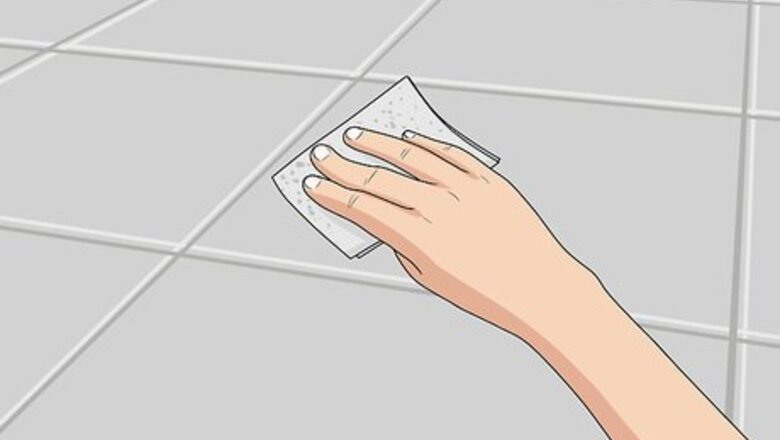
views
- To prep your tiles, sand them smooth and clean them with a multi-purpose cleaner. Repair any chips or cracks with epoxy.
- Apply an epoxy or latex bonding primer, then paint with a semi-gloss or gloss latex-based paint in whatever color you like.
- Seal your paint job with a clear, water-based sealer and use soft cloths or mops to clean your newly painted tile.
Sanding and Cleaning the Ceramic Tiles
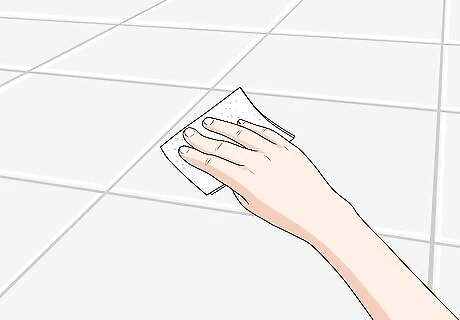
Sand the tiles to remove any imperfections. Use 100-grit sandpaper, rotating the paper in a circular motion to fully sand the tile down, giving you an unblemished surface on which to paint. The goal is to get rid of soap scum and hard build-up on the tile surface, as well as to slightly scuff the tile surface. You are not trying to remove the glaze of the original tiles, so don’t worry about sanding the color away.
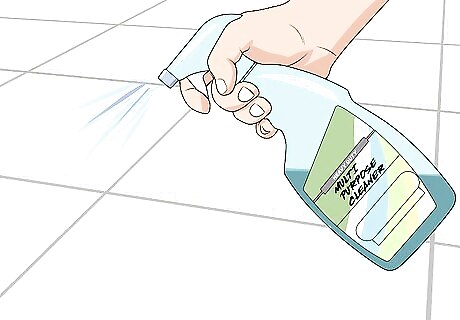
Clean the tiles with a heavy-duty, multi-purpose cleaner. This will remove any mold or grime clinging to the surface or grout, as well as sanding dust that clung to the tiles. Be thorough, as any debris left behind can cause the paint to have trouble holding. You can use a combination of one cup bleach with one gallon of warm water instead of a store-bought cleaning solution.

Let the tiling dry. It is important to allow the tiles to fully dry for 24 to 48 hours in order to be sure that your primer and paint coats will keep.

Check for and repair imperfections in the tile and grout. Chips and cracks will affect the ability of the paint to adhere to the tiles, in addition to making it look messy and unprofessional. Repair the tiles with epoxy if necessary. A properly mixed two-part epoxy will allow you to match the epoxy to the level of the surface tile and paint over it without an issue.

Mask any nearby surfaces with painter’s tape. Use the tape as a guide, with the straight edges marking the furthest point you wish to cover with paint. This will keep anything you do not want to get paint on from getting an accidental new shade.
Painting the Tiles

Coat the tiles with a bonding primer. An epoxy or latex bonding primer will help the paint adhere much better to the tiles than an ordinary primer would. You can apply primer just like a coat of paint, always brushing away from the painter’s tape.
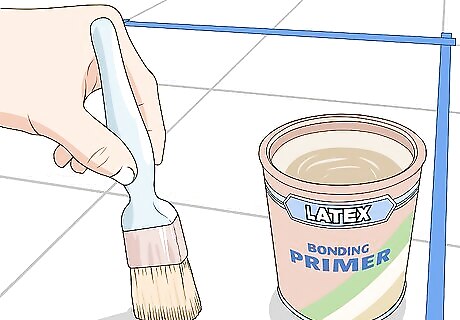
Use a paintbrush to apply a coat of paint to the primed tiles and grout. Choose a semi-gloss or gloss latex-based paint in order to ensure that it will adhere and fully cover the color below. Be sure to fully cover the tiles and grout. You can use paint thinner to spread the paint more evenly across the tiles. You will be applying multiple coats of paint, so don’t worry if the color below is still visible after the first coat.

Allow the paint to dry. This may take up to a few days, and no less than 24 hours. Check the manufacturer guidelines to see how long you can expect the drying process to take.
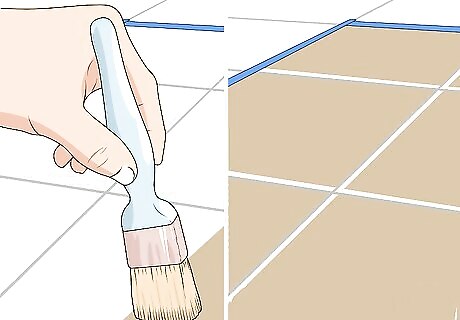
Repeat the painting and drying process. Apply as many coats as the paint manufacturer recommends.
Protecting Your Newly Painted Tiles
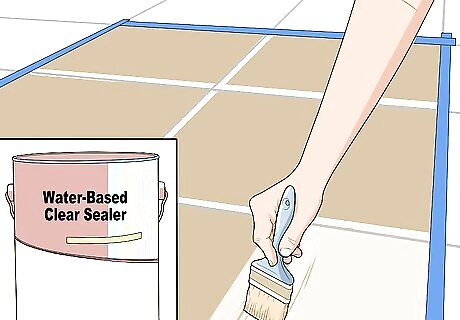
Apply a water-based sealer to the tiles. It may take 2 or 3 coats of clear sealer to ensure that the paint will properly adhere and maintain the sheen you want. Allow each coat of sealer to dry before adding another. Sealing the paint will protect it from the risk of tarnishing, chipping, and fading that painting ceramic tiles comes with.

Remove the painter’s tape to reveal a straight even edge. Below the tape there will be no paint, so your ceramic tiles will now have a perfect border. You can paint over any blemishes or missed spots that the painter's tape covered up, but be sure to let them dry.

Paint the grout with grout paint, if desired. If you want to keep the look of tile, you may choose to carefully apply a coat of grout paint to the grout you painted over, making sure to avoid the tile itself. This will highlight the clean, crisp look that tile is known for.
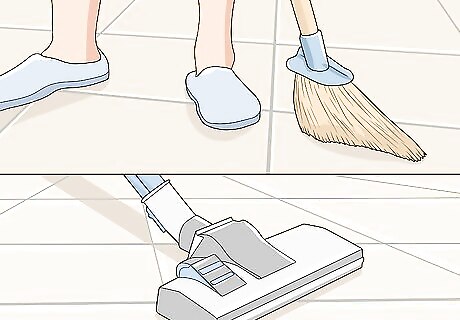
Care for the tiles once the sealer has dried. It is important to take care of your freshly painted ceramic tiles by sweeping and vacuuming them if they are part of the floor, or dusting and wiping them down if they are part of a countertop or backsplash. You can use floor mats to help protect your painted tile floor from scuff marks.
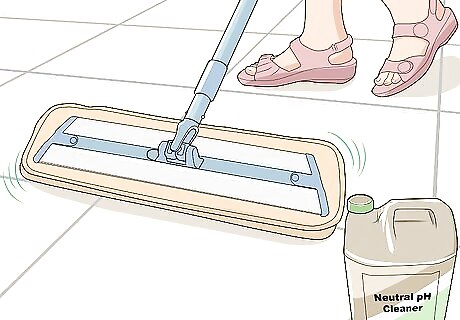
Clean the painted ceramic tiles with gentle tools. Always use neutral pH cleaners and avoid abrasive implements like steel wool or scouring brushes. Soft tools like mops and cloths are a better choice. Allowing water or cleaners to stand on ceramic tile can strip the paint, so you should be sure to clean up spills quickly.




















Comments
0 comment